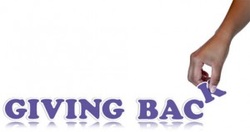What’s their secret to this kind of success? Along with high-quality premium yogurt, Community Engagement and Giving Back are core to sweetFrog’s growth strategy. A “good neighbor” policy of community engagement permeates day to day operations at sweetFrog. sweetFrog is a “network of mom and pop shops who are invested in their local community”, says James Denison, PR/Social Media Associate.
Just last week, sweetFrog commemorated the opening of their 300th location by partnering with Share our Strength’s (SOS) “Dine Out For no Kid Hungry Day” program to help connect kids with meals. The “300 for 300,000 Campaign” was launched to help feed many of our nation’s hungry children.
Participating sweetFrog locations donated proceeds from sales on Sunday, September 22, 2013 to SOS. The goal was to help raise enough money to connect as many as 300,000 meals to children. A portion of the proceeds raised will remain in the communities where they were raised.
Other in store events included:
- Canned food drives, with food given to local food banks
- In-store donations from customers were collected on behalf of SOS
- Customers participation was rewarded through a sweepstakes with thee grand-prize winners earning 100 cups of sweetFrog yogurt
Kudos to employees of the Lawrenceville, GA store who donated their tip jars for the entire week to SOS.
“We are a young company, and this is our first undertaking to harness the philanthropic power of our network of stores throughout the country,” Cha said. “We have high hopes that our part in this national program will make a meaningful difference in the lives of many, many children.” says, Derek Cha, founder and CEO of sweetFrog.
About sweetFrog
As the preeminent premium frozen yogurt retailer in the country (recently named by The Daily Meal as “America’s Best Frozen Yogurt”), sweetFrog provides an unparalleled experience with every cup of yogurt. Since its 2009 founding in Richmond, Va. by entrepreneur Derek Cha and his wife Annah, sweetFrog has expanded to 300 stores in the United States, Great Britain and the Caribbean. To learn more about sweetFrog, visit http://sweetfrogyogurt.com.
About No Kid Hungry
No child should grow up hungry in America, but one in five children struggles with hunger. Share Our Strength’s No Kid Hungry® campaign is ending childhood hunger in America by ensuring all children get the healthy food they need, every day. The No Kid Hungry campaign connects kids in need to effective nutrition programs like school breakfast and summer meals and teaches low-income families to cook healthy, affordable meals through Cooking Matters. This work is accomplished through the No Kid Hungry network, made up of private citizens, public officials, nonprofits, business leaders and others providing innovative hunger solutions in their communities. Join us at NoKidHungry.org.
About GIVINGtrax
GIVINGtrax makes it easy to give back at work. We are the only social network



 RSS Feed
RSS Feed